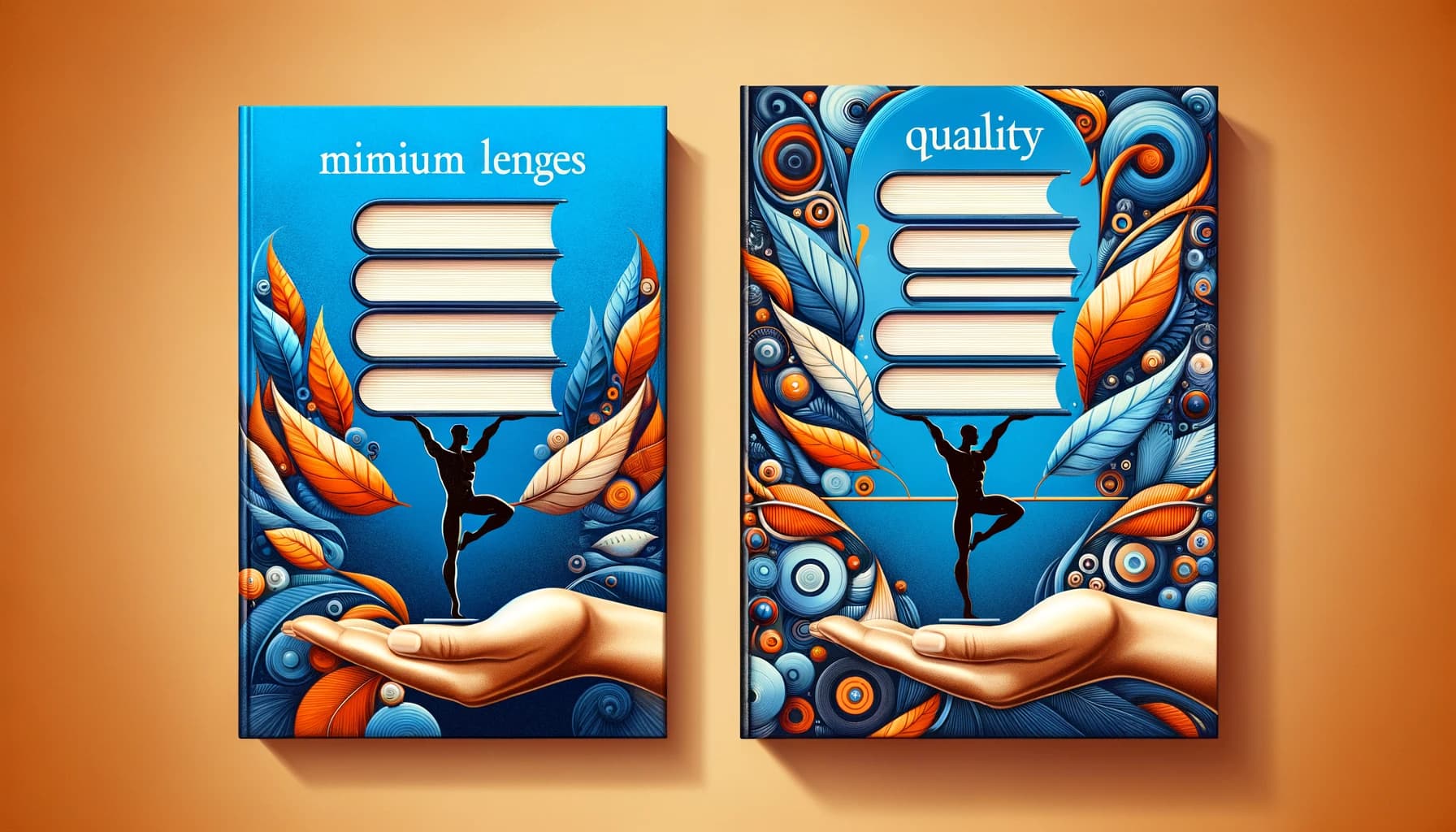Table of Contents
Ever stared at a blank page wondering how to start writing that interview? Been there, done that, got the coffee mug.
But hey, it doesn’t have to be that hard! Stick with me, and we’ll make writing interviews feel like chatting with an old friend.
From nailing down your questions to wrapping up professionally, we’ve got the steps to make the whole process a breeze.
Key Takeaways
- Prepare thoroughly by researching your interviewee and clarifying the interview’s purpose.
- Craft open-ended, relevant questions organized in a logical order.
- Create a comfortable environment to make the interviewee feel at ease.
- Practice active listening and observe non-verbal cues during the conversation.
- Avoid inappropriate or overly personal questions that aren’t relevant.
- Encourage detailed responses by gently prompting and showing genuine interest.
- Handle different types of questions and adjust based on the interviewee’s responses.
- Close the interview professionally by summarizing key points and outlining next steps.

Step 1: Prepare Thoroughly for the Interview
Getting ready for an interview isn’t just about jotting down a few questions. It’s about diving deep into your subject and understanding who you’re interviewing. Did you know that interviewers typically spend only about 5-7 seconds scanning a resume? Making those seconds count can set the tone for a successful conversation.
Start by researching your interviewee thoroughly. Look into their background, recent projects, and any relevant news. This shows respect for their work and helps you craft insightful questions. If you’re interviewing someone in a specialized field, like a children’s book author, reading their work can provide valuable insight. Interested in this area yourself? Check out How to Become a Children’s Book Author for some inspiration.
Next, clarify the purpose of your interview. Are you aiming to uncover personal stories, gather expert opinions, or provide helpful tips to your audience? Knowing your goals will guide your preparation and lead to a more focused interview.
Finally, anticipate possible responses and think about follow-up questions. This doesn’t mean scripting everything, but being prepared can help you navigate the conversation more smoothly.
Step 2: Write Effective and Relevant Questions
Your questions are the backbone of the interview, so making them count is crucial. Focus on open-ended questions that encourage detailed responses. Instead of asking, “Do you enjoy writing?” try, “What motivates you during the writing process?” This invites your interviewee to share more about their experiences.
Make sure your questions are relevant to both the interviewee and your audience. If your readers are aspiring writers, for example, delve into topics like overcoming writer’s block or finding inspiration. For some creative ideas, you might explore these Winter Writing Prompts to see how seasoned writers spark their creativity.
Organize your questions in a logical order, starting with general topics before moving into more specific areas. This flow makes the interview feel more like a natural conversation. And don’t forget to avoid overly personal or potentially sensitive topics unless they have been agreed upon beforehand.
Step 3: Create a Comfortable Interview Environment
Setting the right atmosphere can make a huge difference in how open and relaxed your interviewee feels. Choose a quiet, comfortable location free from distractions. If the interview is virtual, ensure both parties are familiar with the technology to avoid technical hiccups.
Begin with a bit of small talk to break the ice. Simple questions like “How has your day been?” or comments on mutual interests can help ease any initial tension. Remember, the more at ease your interviewee feels, the more insightful and genuine their responses will be.
Also, pay attention to body language and tone. Maintain eye contact, nod when appropriate, and offer encouraging smiles. These non-verbal cues show that you’re engaged and interested in what they’re saying.
Creating a comfortable environment isn’t just about the physical space; it’s about fostering trust and openness. For more on building strong connections through writing, take a look at How to Write a Foreword, which offers great tips on setting the tone and engaging your audience.

Step 4: Practice Active Listening and Observation
When you’re in the middle of an interview, it’s easy to focus solely on your next question. But remember, an interview is a two-way street. Paying close attention to your interviewee’s responses is key to a meaningful conversation. Active listening involves fully concentrating on what the other person is saying, understanding their message, and responding thoughtfully.
One tip is to paraphrase their answers to confirm understanding. For example, if they mention a challenging project, you might say, “So, it sounds like managing that team taught you a lot about leadership under pressure.” This shows you’re engaged and helps deepen the discussion.
Additionally, observe their body language and tone of voice. Non-verbal cues can reveal how comfortable they are or highlight topics they’re passionate about. If you notice them light up when discussing a particular subject, don’t hesitate to explore that area further.
Active listening not only enriches the interview but also makes your interviewee feel valued. Considering that only 41% of candidates receive feedback after an interview, making someone feel heard can set you apart. For more insights on connecting deeply during conversations, you might find How to Write a Dystopian Story helpful, especially if you’re discussing complex topics and want to understand different perspectives.
Step 5: Avoid Inappropriate Questions
No one likes to be put on the spot with uncomfortable questions. Steering clear of inappropriate topics is crucial for maintaining professionalism and building trust. Avoid questions related to personal life, age, marital status, religion, or any other sensitive areas that aren’t relevant to the interview’s purpose.
Remember, certain questions can not only derail the conversation but may also be legally off-limits, especially in job interviews. For instance, asking about someone’s plans to start a family isn’t just intrusive; it can be discriminatory.
If you’re unsure whether a question is appropriate, consider if it’s directly related to the interview’s objectives. When in doubt, leave it out. This approach ensures you respect boundaries and keeps the focus on valuable insights.
For those interested in crafting appropriate questions for specific genres, such as horror writing, check out these Horror Story Plot ideas to inspire creative and engaging discussions without crossing any lines.
Step 6: Encourage Detailed Responses
Sometimes, interviewees might provide brief answers, either due to nerves or uncertainty about how much to share. It’s your job to gently encourage them to elaborate. Simple prompts like “Can you tell me more about that?” or “What was that experience like for you?” can open the door to richer dialogue.
Avoid interrupting or rushing them. Give them the space to think and express themselves fully. This patience can lead to unexpected insights and stories that add depth to your interview.
Also, show genuine curiosity. If they mention something intriguing, follow up with specific questions. For instance, “You mentioned overcoming a significant obstacle during that project. How did you approach that challenge?” This not only encourages them to share more but also demonstrates your interest in their experience.
If you’re seeking ways to inspire detailed responses in creative contexts, these Realistic Fiction Writing Prompts can provide ideas on how to prompt narratives that are rich in detail.
Step 7: Handle Different Types of Questions
An effective interviewer knows how to balance various question types to keep the conversation engaging. Mix open-ended questions, which allow for expansive answers, with more specific ones that focus on particular details.
Be prepared to adjust your questions based on the interviewee’s responses. If they seem hesitant, you might need to ask more guiding questions. On the other hand, if they’re very talkative, you may need to steer the conversation back on track gently.
Also, be mindful of the timing. Since interviews typically last around 40 minutes, managing the flow is important to cover all your key topics. With an average of 118 people applying for each job and only 20% getting interviews, making the most of your time is crucial.
For those looking to refine their questioning techniques, especially when exploring specific genres like dystopian fiction, the Dystopian Plot Generator might inspire you to think about how different questions can elicit creative responses.
Step 8: Close the Interview Professionally
Wrapping up an interview is just as important as how you start it. A strong closing leaves a lasting impression and ensures both parties feel satisfied with the conversation. Summarize the key points discussed to show that you’ve been attentive and to confirm your understanding.
Ask if they have any questions or anything they’d like to add. This gives them the opportunity to share thoughts they might have hesitated to bring up earlier. Express your appreciation for their time and insights, reinforcing the positive experience.
Finally, outline any next steps if applicable. Let them know when they can expect to hear from you or what happens next in the process. Considering that only 44% of candidates hear back within a few weeks, being clear about follow-up shows professionalism and respect.
If you’re interested in learning more about effective communication and leaving a strong final impression, you might enjoy reading about How to Write a Foreword. It offers valuable tips on crafting impactful closing statements that resonate with readers.
FAQs
Research the candidate’s background, review their resume, and understand the role’s requirements. Prepare relevant questions that assess their skills and experience. This thorough preparation helps you conduct a focused and effective interview.
Ask open-ended questions that encourage detailed responses. Examples include behavioral questions about past experiences, situational questions to assess problem-solving skills, and technical questions relevant to the job’s requirements.
Choose a quiet, private space free from distractions. Begin with a warm greeting and casual conversation to put the interviewee at ease. Explain the interview process clearly to help them feel more comfortable.
Avoid questions about personal topics such as age, marital status, religion, or ethnicity. These are inappropriate and can be illegal. Focus on the candidate’s skills, experience, and qualifications relevant to the job.



